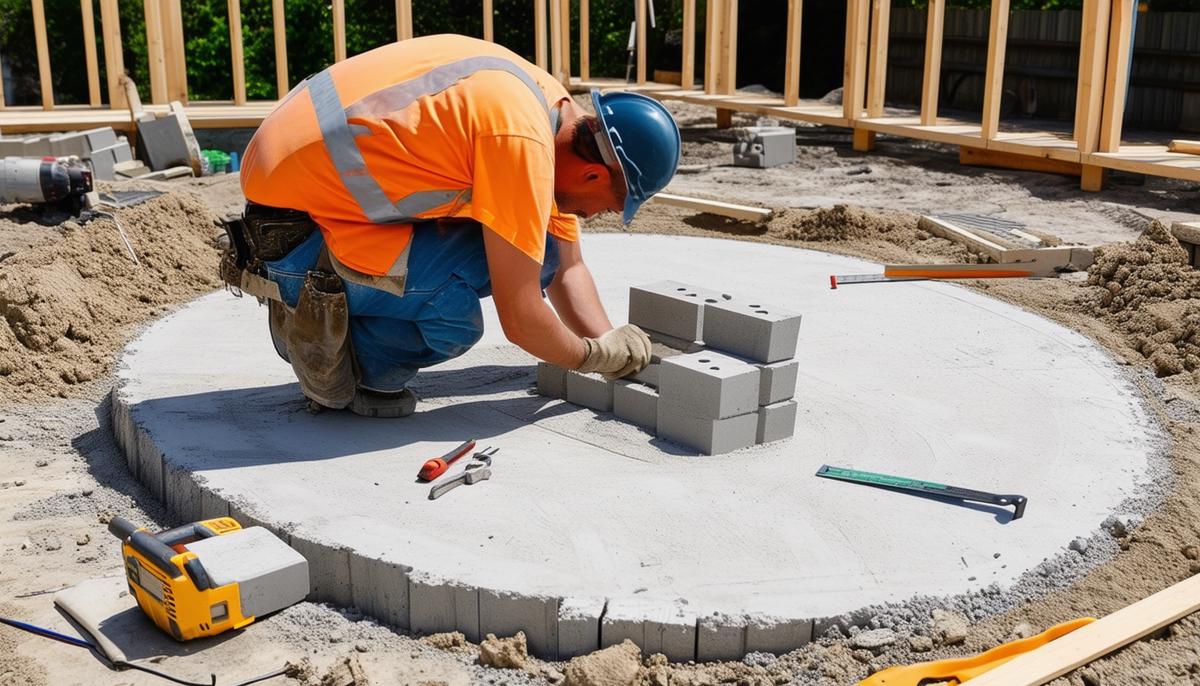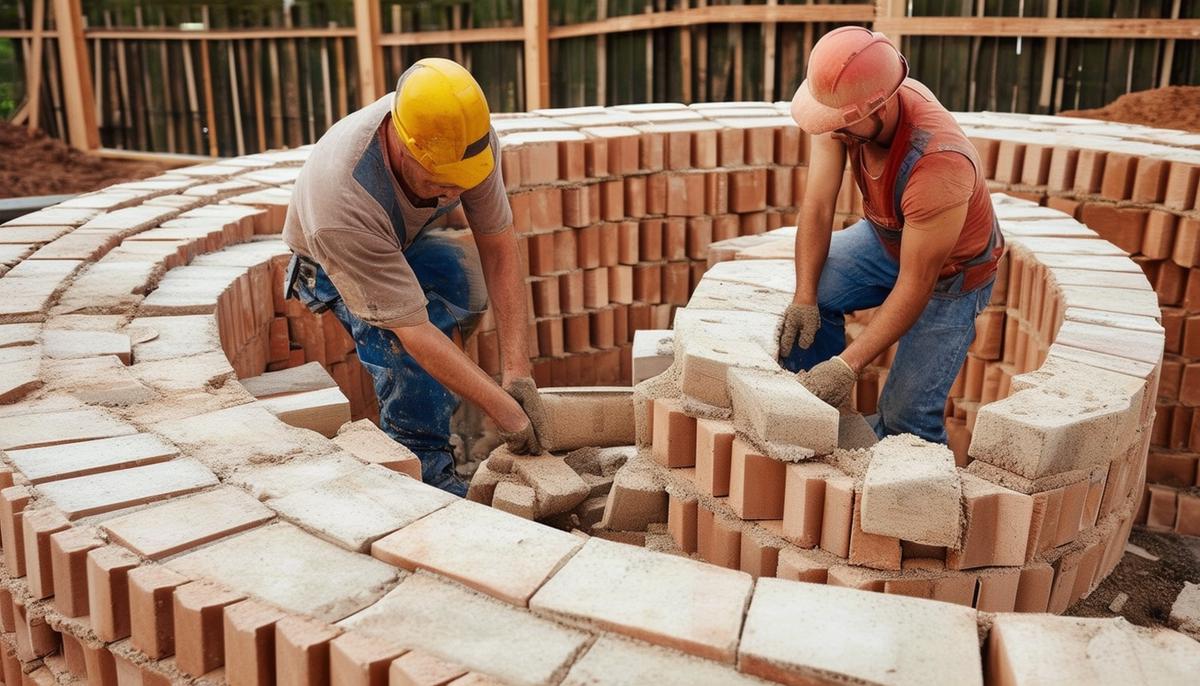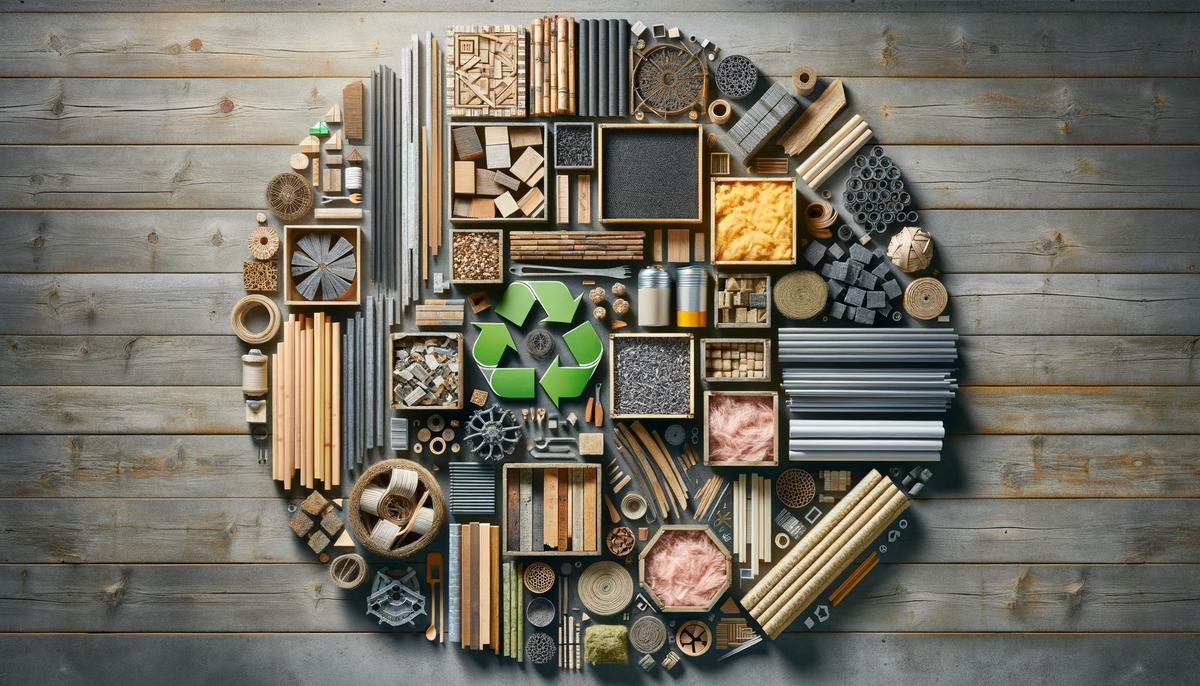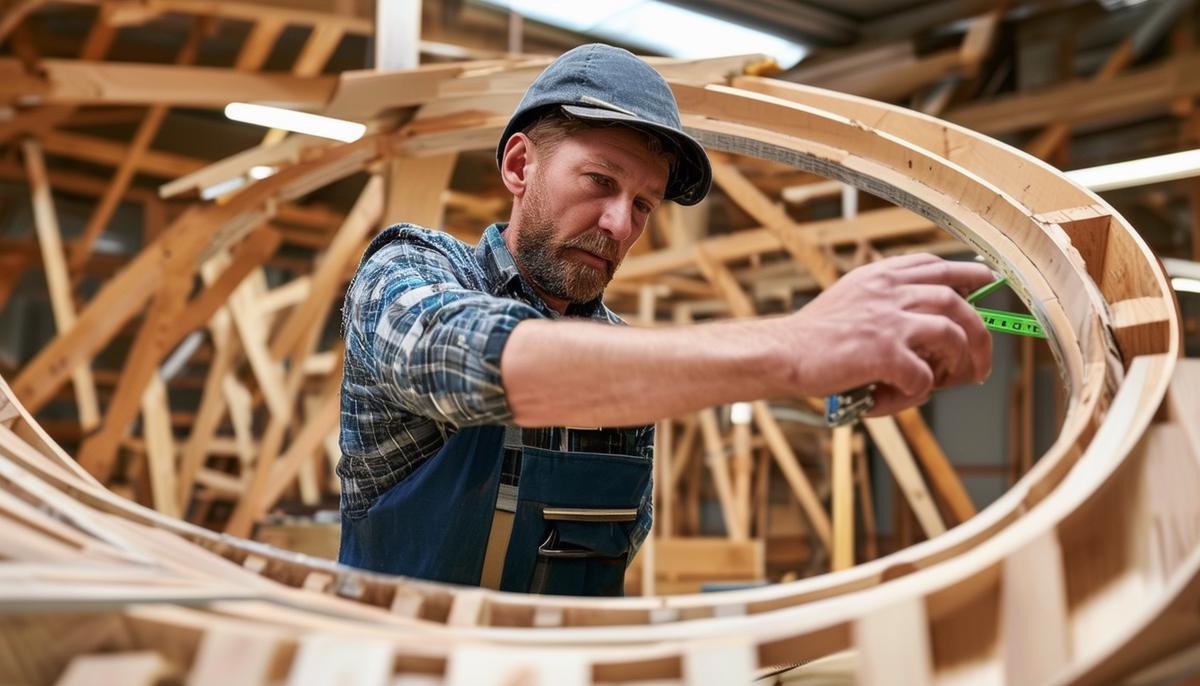Building round structures can be a rewarding challenge. From laying the foundation to constructing circular walls and choosing the right materials, each step requires careful planning and execution. This guide will walk you through these stages, offering practical tips to help you create a sturdy and appealing round structure.
Laying Foundations
For round structures, preparation is crucial. Start by clearing your area and flattening the terrain using a rake, ensuring a level surface. The foundation blocks, which will also serve as your floor tiles, need to fit together snugly, so precision is key.
Once the ground is prepped, lay down foundation blocks. Use any material you desire for these tiles, but many builders recommend the number 7 block in the 4M category because it provides a sturdy base.
To shape your foundation into a perfect circle:
- Select a singular block
- Right-click to remove any excess
- Sculpt your foundation bit by bit
This technique allows you to have a flawless base for your round structure without any hassle.
A solid, well-laid foundation sets the stage for everything else. It's your anchor, ensuring stability for the entire structure.

Constructing Circular Walls
To achieve a perfect round shape, use single blocks from the 1M category. Start by placing the blocks diagonally at the corners. Staggering them diagonally softens those harsh corners and helps create a smooth, rounded look.
For every set of diagonals you lay, balance them out by laying the same number of blocks side by side. For example, if you've laid three blocks diagonally, follow it up with three blocks placed side by side. This pattern ensures stability and symmetry.
Continue with this pattern—diagonal, side by side—until you've enclosed your circular structure. Once you have your circular ground plan set, start building your walls upward, one block at a time. Keep checking your alignment to make sure everything remains circular. Any minor mistakes can be easily corrected by removing blocks and adjusting as you go.
With your walls rising block by block, you'll be watching your circular structure take shape. The steady progress will encourage you to keep going, chasing that perfect circular wall height you envisioned.

Choosing and Using Building Materials
Selecting the right materials is crucial for your project's success. Here are some options to consider:
- Biobased materials: Sourced from renewable, biological origins like plants or agricultural waste. Wood is a fantastic example, offering durability, versatility, and a warm aesthetic. Ensure it's sustainably sourced.
- Technical materials designed for deconstructibility: These include prefabricated components that can easily be taken apart and reused. Steel framed walls with pre-drilled holes and bolted joints are a good example.
- Reused materials: Reclaimed wood from old barns or bricks from demolition sites can add character while keeping materials out of landfills. The challenge is matching quantity and quality.
- Hybrid systems: A mix of biobased, technical, and reused materials, offering flexibility to tailor each part of your structure for specific needs.
Consider performing a Life Cycle Assessment (LCA) to estimate the total environmental impact of your materials. While not an exact science, it can help inform your choices.
Material passports can be a valuable tool. These detailed documents provide information about the materials' origins, lifespan, and potential for reuse or recycling. Adopting a material passport system can help track materials carefully and ensure informed decisions for future reuse projects.
By keeping these considerations in mind, you're contributing to a more sustainable and circular approach in construction.

Integrating Design for Deconstruction
Design for Deconstruction (DfD) maximizes the potential reuse of building materials and components. Here's how to integrate DfD principles into your circular structure:
- Adopt flexible design documents: This allows you to work with a broader range of reclaimed materials and adjust dimensions as needed.
- Prioritize easy disassembly: Use mechanical fasteners like screws, bolts, and brackets instead of adhesives. For timber, consider traditional joinery techniques or prefabricated metal brackets.
- Source reused materials from donor buildings: This practice cuts down on waste and offers unique character to your construction.
- Use material passports: These documents provide information about each component's origin, use, and potential for future reincarnations.
By designing with deconstruction in mind, you're future-proofing your work and making a commitment to sustainability and resource efficiency.

Building Circular Roofs
Building a circular roof requires precision and patience. Here's how to tackle it:
- Start with a center roof piece: Place a number 5 roof piece in the middle of your structure as an anchor point.
- Build outward: Use number 2 roof pieces to connect to the center piece, moving outward in a sunburst effect.
- Pay attention to corners: Use number 2 roof pieces to smoothly connect the edges, ensuring no gaps or overlaps.
- For variations like watchtowers: Create a flat area on top by placing horizontal blocks after laying the center and outward roof pieces. Add a small railing for an observation deck look.
- Final check: Walk around your structure, checking for inconsistencies or gaps. Make small adjustments as needed.
By starting with a strong center, using the right pieces, and paying attention to details, you'll craft a roof that's both functional and visually appealing. The end result will be a solid, stylish crown atop your round structure.

- European Environment Agency. Buildings and construction. 2022.
- De Wolf C, Pomponi F, Moncaster A. Measuring embodied carbon dioxide equivalent of buildings: A review and critique of current industry practice. Energy and Buildings. 2017;140:68-80.
- Brand S. How Buildings Learn: What Happens After They're Built. Penguin; 1995.
